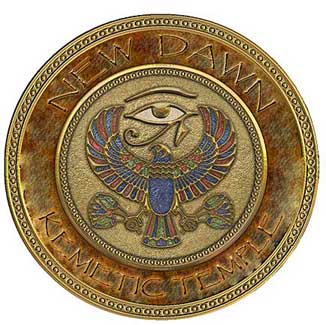|
|
|


~Joerg Reid~
It is likely that the typical tourist to Egypt will not,
on their first visit, tour the Fayoum region, though for those interested in
nature, or fossils, perhaps they should. However, for the antiquities enthusiast,
there is simply too many other, perhaps somewhat more convenient sights to see.
Yet, the Fayoum does offer many important historical monuments. Many of these
date from the Graeco-Roman Period, though others are much older, including Medinet
Madi, which many consider to be one of the most important temples in the Fayoum.
Situated about 30 kilometers southwest of Medinet el-Fayoum, Medinet Madi, which
means "City of the Past", was during the Graeco-Roman period known
as Narmouthis (City of Renenutet). This ancient city is located on a small hill
commanding a strategic position guarding the southwestern entrance to the Fayoum,
and was probably occupied even as early as the prehistoric period. Besides the
well know Middle Kingdom temple. Archaeologists have also identified two distinct
towns in the immediate area.
However, the most interesting structure visible to tourists is the temple dedicated to Renenutet (a protector of the harvest and granaries), the serpent goddess, as well as Sobek and Horus. This twelfth Dynasty structure, tucked into a wadi and not visible from the road, was originally built by Amenemhet III and IV. The temple was restored during the 19th Dynasty, and was expanded front and back during the Greek period.
There is actually little of the original building remaining, though everywhere there is debris. However, what does remain of the temple is well preserved. The temple, which faces south, constantly battles the rising sand. Here, we find walls that are only a few meters high, with a few reliefs and hieroglyphic inscriptions here, along with an avenue of sphinxes and lions. To the east of the temple there are also mudbrick storerooms and other foundations.
The inner chambers of the temple, made of dart sandstone, are the oldest part of the structure, and a rare example of a Middle Kingdom monumental building. This part of the temple is in fact rather small, with a columned hall, or probably more precisely, a two Papyrus columned portico leading into a sanctuary with three shrines (or chapels) occupying the rear. The central shrine once housed a large statue of Renenutet, with Amenemhet III and IV standing on either side of her.
The Ptolemaic expansion of the temple included the processional way to the south with its lions and sphinxes (in both Egyptian and Greek style), which passed through a columned kiosk which eventually leads to the older two columned portico. It was probably Ptolemy IX Soter II who also added three courtyards, along with other expansion elements.
In 1995, a Greek period limestone gate was discovered east of the known temple. Excavation at that site revealed a second, mudbrick temple with stone doorways and lintels dedicated to Sobek, the crocodile god, with ruins rising about four meters. Before the gate, two crouching lions and a sphinx were found, and among the other debris, tables and papyri were also discovered, including four important 3rd century oracular demotic documents. Apparently, in 1930, a number of texts of some importance (known as A Manichaean Psalm-Book, Part II) were also discovered at this location by Carl Schmidt which are thought to date from about 340 AD.
Very recently, the Italian team from Pisa and Messina University that have been excavating this site since 1966 also discovered, on the north side of the new temple, a poorly preserved vaulted structure. On the north side of the temple court, a crocodile nursery was also discovered with dozens of eggs in different stages of maturity.
The Italian teem, which is working to construct a three dimensional model of the monuments in the area in order to explore the chronological development of the site from the Middle Kingdom through the Greek and Roman periods, also uncovered a large Roman town and ten Christian churches of the sixth and seventh century.
We do not know what happened to spell the end of ancient Medinet Madi, but a medieval romance poem known as the "Story of Abu Zayd", which was often told in coffee shops throughout the Middle East, relates that Medinet Madi was destroyed by Abu Zeid when the king refused him and his soldiers food and shelter.